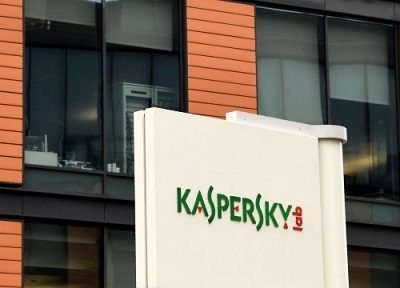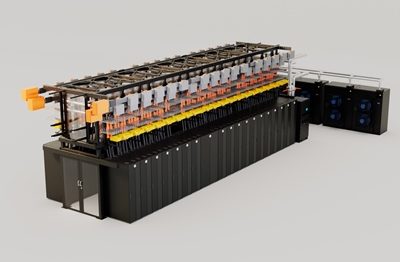Aviat Networks cites construction, not capacity as real challenge in LTE deployment
Even as most mobile operators around the globe and especially in Africa continue to deploy 4G networks using LTE (Long Term Evolution) solutions, leading backhaul and network management provider Aviat Networks has described the building of such a national infrastructure as a major undertaking. Making this observation recently is one of its experts, Gary Croke, Aviat Networks’ director of marketing and communications.
According to him, the largest challenges in building out an LTE network will include planning, staging and deploying the technology at maximum speed and with minimal costs – not to downplay the capacity concerns for LTE deployment itself. For example in Nigeria, where it has been proposed that the Nigerian Communications Commission (NCC) make available spectrum in the 38 GHz and 42 GHz bands to help relieve pressure on traditional 7-13 GHz microwave backhaul. But even if more capacity is made available, mobile operators will be in a tight race to build out LTE networks around the world as quickly and cost-effectively as possible—backhaul is a critical component of that job.
Using the United States as an example, Mr. Croke explained that there are more than 300,000 2G/3G cell sites in the United States and LTE penetration is approaching approximately 80,000 sites today. Mobile operators want to have 95 percent of their coverage footprint for LTE achieved by 2014. So a massive construction project lies ahead with a tight timeframe for completing it.
Giving more perspective, the Aviat expert used the analogy of the United States Interstate Highways: “Building networks to support 4G LTE is similar to the concerted, 35-year effort spearheaded by President Dwight D. Eisenhower in building the Interstate Highway System (IHS), a national network of high-speed highways which began in 1956 in the US. With the IHS, it was not the size of the highways that meant 35 years of work, it was the sheer number of highways that needed to be built in a specific timeframe. Similarly, network build-out to support 4G LTE is not about the capacity needs of backhaul—as both microwave and fiber exceed the capacity requirement—but rather the massive construction that is both urgent (speed of deployment) and expensive (cost of build).”
Describing backhaul as a significant factor in accomplishing LTE rollouts, Mr. Croke suggested that mobile operators could simply overlay LTE base stations on their existing cell site infrastructure to handle the Radio Access Network (RAN) portion of the deployment, with backhaul in most cases requiring switching from copper to either microwave or fiber because of the capacity required.
While observing that both fiber and microwave have ample capacity to handle 4G backhaul, he estimates that it will require 200 Mbps to backhaul 3G and 4G services over the same link, with microwave and fiber both providing this level of capacity—this view is supported by industry reports. The backhaul must also provide QoS capabilities to discriminate between applications and to deliver the right level of service to each application.
Listing the issues as deploying LTE backhaul quickly and with minimal cost, he also estimated that today 50 percent of the total cell site operations cost for 2G and 3G is associated with backhaul build. “These operational costs are proportional to capacity and since 4G LTE has two to five times more capacity than 3G, he said, “We can expect these operational costs to at least double, in line with the increased capacity offering of 4G LTE. As 2G and 3G networks are not going away either, it is therefore essential to hold down backhaul costs as much as possible” he concluded.
In determining the choices available to carriers, Mr. Croke acknowledged fibre as a good choice in fibre-rich environments because of its ease in deployment due to pre-existing installations—the story is different where fibre does not pre-exist. In Greenfield urban environments, microwave maintains its superiority over fibre for quicker time-to-market and more cost-effective implementation. In suburban and rural areas (e.g., most parts of Nigeria, the rest of Africa), microwave is an even better fit than fibre because it is even easier and much more cost-effective to deploy in the long run over the longer distances involved between cell sites as it can take months to run fiber to distant cell sites.
In addition, with fiber, carriers must pay monthly leasing costs—often up-front—once the fiber is deployed. On the other hand, microwave can be deployed in days or weeks and will not carry monthly leasing charges because carriers own it. Then the reliability issue must be considered where fibre is often cut and it takes time to repair—microwave is not susceptible to the same physical issues and has proven to have a higher uptime.
Another area Mr. Croke commented on is the ability to carry 2G, 3G and 4G traffic on the same backhaul link. According to the Aviat expert, 2G networks run TDM traffic rather than IP, so the microwave solutions must therefore use hybrid radios that can carry both TDM and IP. “From a deployment standpoint, microwave radios require site surveys and specialized engineering, path planning and installation and it is therefore essential for mobile operators to work with a technology provider who has strong experience in deploying microwave for cellular backhaul.”
Describing Aviat Networks as the obvious choice in using microwave to deploy LTE networks, Mr. Croke further stated that rolling out 4G LTE would require deploying new backhaul to tens of thousands of cell sites, all within a tight timeframe and budget. This, according to him, is because when fibre is not readily available, microwave technology is the best choice for backhaul technology.
But in seeking a solution to the backhaul problem, he also advised mobile operators to look for a microwave technology vendor, like Aviat Networks, who has extensive experience in successfully deploying their products in telecommunications networks. “If microwave technology helps to address the cost issues of LTE backhaul, an experienced microwave vendor will solve the logistical issues in getting it deployed.” Mr. Croke is billed to be in Nigeria in April to discuss these challenges with mobile operators. Seminars are planned with several major mobile operators as well as sessions with other groups interested in wireless backhaul including oil and gas companies.
































